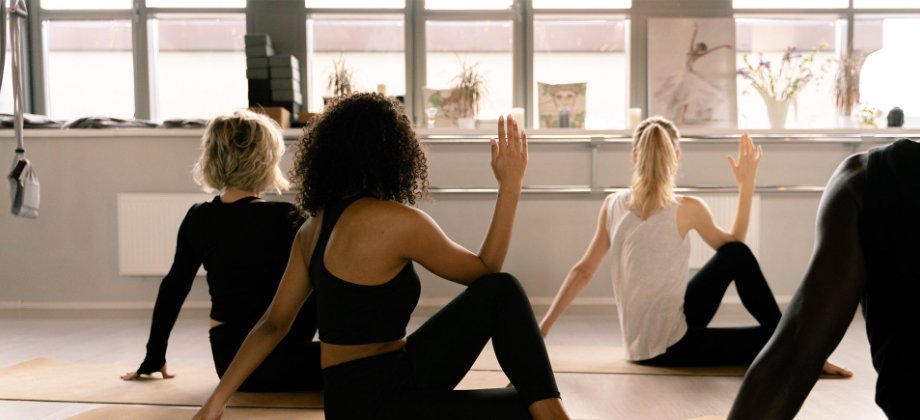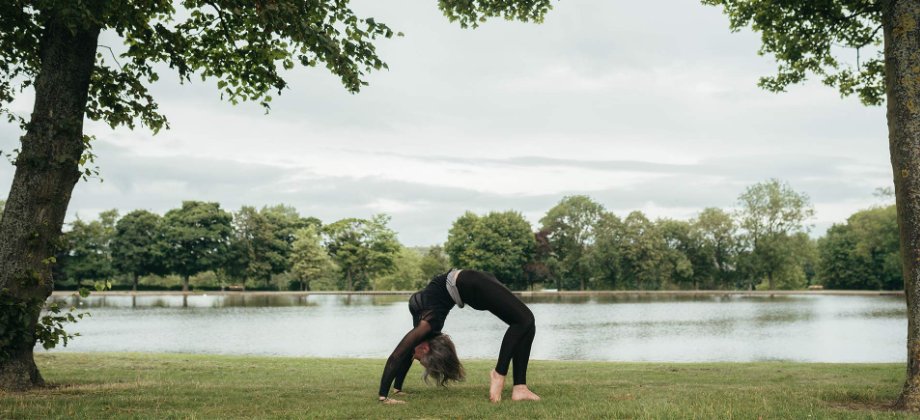
The Principle of Ahimsa: Incorporating Yoga Philosophy Into Your Class
The Yoga Sutras is considered to be one of the foundational texts of the yogic philosophy and tradition – a great text in which yogis and yoginis all around the world find inspiration and wisdom for hundreds of years now. There, Patanjali reveals the secrets on how to live life and walk the path towards studying the inner self and reaching enlightenment.
According to Patanjali, this path is eightfold. It is usually referred to as the Eight Limbs of Yoga, from the Sankrit term “ashtanga” which translates as having eight limbs or components. The steps in this eightfold path include yamas, niyamas, asana, pranayama, pratyahara, dharana, dhyana, and samadhi – the ultimate state of self-realization.
Therefore, the yogi’s journey begins with the yamas; five moral guidelines and ethical standards, which focus on our actions, our speech and our thoughts, and remind us of our duties as social beings. And Ahimsa is the first of these five Yamas.
In short, ahimsa refers to the principle of non-violence. And it’s not only about physical violence. It’s about not physically harming both us and the others, using no harmful speech and having no harmful thoughts regarding others or ourselves.
Remind them that yoga is much more than asana and explain that asana is actually just one of these eight steps.
As a yoga teacher, you have the option to stick to teaching just the physical practice of asana, or to treat yoga as a whole and draw inspiration from its tradition in order to inspire your students as well – both on and off the mat. If you place yourself in the second category, you probably already know that there is a lot of inspiration to draw from in the yogic philosophy and tradition. And the concept of ahimsa is a great example.
Read on and find out how you can create an inspiring – and possibly even life-changing – yoga class, by introducing your students to the concept of ahimsa.
Start With an Intro
The best way to put together an ahimsa-themed yoga class is to begin with a mini lecture. Make a brief introduction on the Yoga Sutras of Patanjali and the Eight Limbs of Yoga; the eight steps towards reaching a state of yoga and becoming more connected to one’s authentic self – the eight steps towards enlightenment and liberation.
Remind them that yoga is much more than asana and explain that asana is actually just one of these eight steps. Introduce the term of ahimsa as the first of the five yamas – the five ethical rules that are presented in the sutras.
Explain that ahimsa in Sanskrit literally means non-violence, non-harming, non-injury. You can mention that ahimsa is often connected to adopting a vegetarian or vegan diet and clarify that it actually goes way beyond that. Let your students know that by the term of ahimsa we mean that one should not be violent in their thoughts, words or actions towards both themselves and the other beings. One should be kind and maintain compassion towards both themselves and the others. And this is actually the first thing someone needs to practice, long before learning asana and pranayama.
Tell your students that, according to Patanjali, when one becomes firmly grounded in ahimsa, then others in their environment give up any feelings of hostility and cease their aggressive behavior. In other words, Patanjali suggests that kindness is contagious. Give them examples. Remind them of the times they have noticed this automatic process when in the presence of a truly kind person.
Finally, encourage them to approach the practice that will follow with mindfulness, acceptance and loving kindness.

Bring Ahimsa into Practice
Your #1 goal throughout the practice should be to encourage your students to cultivate awareness and listen to their bodies, thoughts and feelings, in a self-loving and non-judgmental way. Awareness and violence can’t coexist. When we are truly listening to our body, there is no way we can be violent to it, and as soon as we are getting violent with our body, it means that we are no longer listening to it.
So continue with a short meditation. Ask your students to come into a seated posture, using any props and doing whatever they need to make the posture as comfortable as it gets. Invite them to gently close their eyes (or keep them open with a soft gaze, if closing them doesn’t feel good), soften their facial expression and start focusing on their breath, as it naturally flows in and out of their bodies.
After all, an advanced practitioner is not someone who can get into all fancy poses, but the one who actually listens to their body and knows their limits.
Encourage them to just breathe and observe, without judging or striving to change anything about their breath. Then invite them to slowly find their full yogic breath. Make sure you give them the option to just breathe deeply and enjoyably, if the full yogic breath pranayama feels strange, instead of forcing themselves to get to it. Ask them to keep their focus on their breath. Let them know that they might notice their mind wandering or feel distracted by discomfort in their bodies and this is absolutely normal. Tell them that all they need to do is just notice what is going on, remember to softly return to observing the flow of their breath and not punish themselves for being distracted.
As a yoga teacher, you probably often see students forcing themselves to do things their body is not yet ready to do. You may remember yourself doing so too, and if you weren’t lucky enough, you might even still carry around an old injury as a souvenir. And this is pure violence.
Therefore, slowly moving on with asana, remind your students that awareness is the key to becoming grounded in ahimsa. As long as we are truly feeling what is going on in body and mind, there is no way we’ll be forcing ourselves into shapes we shouldn’t get into. After all, an advanced practitioner is not someone who can get into all fancy poses, but the one who actually listens to their body and knows their limits. Make sure your students understand this.
When it comes to teaching asana, start with the simplest variations and encourage your students to use props or take a break anytime they feel that they need to stop. Take Uttanasana (standing forward bend) for example. Ask your students to bend their knees as much as they need in order to bring their torso in touch with their thighs. Explain that in this asana we want to have a long, relaxed spine and neck, and not necessarily straightened legs.
Sirsasana (headstand) is another great example. People are struggling to get into the “full” posture, sometimes putting themselves at risk of serious injury. Ask your students to come into Balasana (child’s pose) and gently roll from their forehead to the top of their head. Make sure they understand that they can lift their knees or extend their feet up if they feel like it, and that it is also ok to just stay in this simpler version of the posture. Remind them that they are the only ones who know what serves them best.
When moving from one asana to the other, ask your students to check what is going on with their breath. Tell them that whenever they notice that they are not breathing calmly, this might be a sign they are overdoing it when they should be pulling back.
End class in Savasana, inviting your students to completely let go of any effort and allow their bodies to relax. Give them as much time as they need to come back into a seated pose, and encourage them to take a little pause in the fetal position and offer themselves a self-loving hug.
Final Thoughts
When teaching the principle of ahimsa in a yoga class, it is obviously very important that you, as a teacher, do not imply violence in any way. Make sure you use kind language and be very careful with hands-on adjustments.
And most importantly, don’t get overwhelmed with the desire to inspire your students to practice ahimsa on the mat and integrate the principle in their everyday lives. There’s no need to sound profound to make a difference. All you can do is teach what you know and trust that what you share matters. You can read the next part in this series here!






